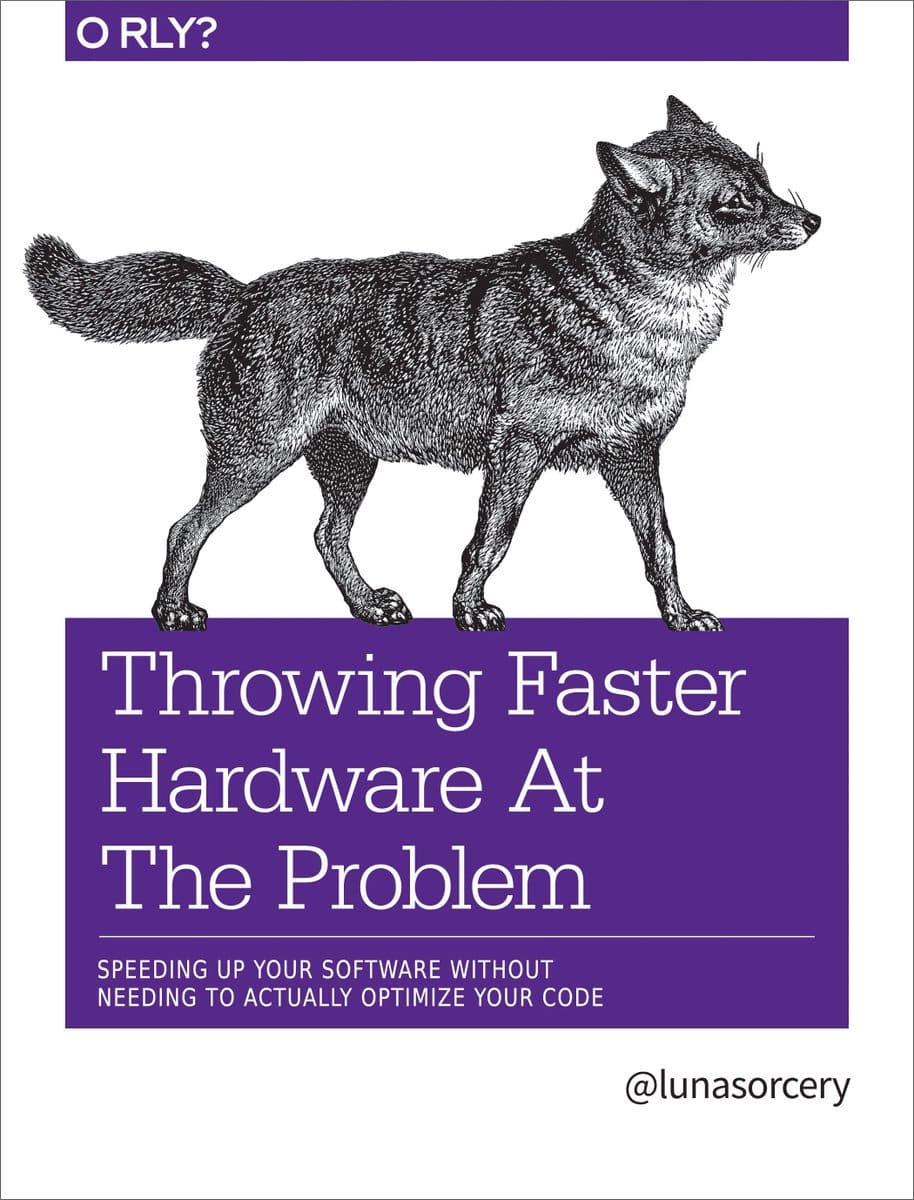
In the bustling realm of Technopolis, a land where the gears of innovation churn ceaselessly and the glow of progress illuminates every corner, there thrived an age-old tactic revered by many as the panacea for all computational woes: Throwing Faster Hardware at the Problem. This strategy, born from the desire to achieve ever-greater speeds and efficiencies, was as simple in concept as it was grand in ambition: when faced with software that crawls and stutters, why delve into the murky depths of optimization when one could simply unleash the beasts of CPU, GPU, and RAM?
Our tale centers on a guild known as the DevOps Dragons, a band of skilled practitioners who navigated the twin domains of development and operations with unmatched prowess. Among them was a young dragon named Alex, whose flame burned with the passion for peak performance and whose hoard glittered with the latest in hardware treasures.
Alex, tasked with taming a behemoth of a program—a legacy application known as CodeGoliath—faced a dilemma. CodeGoliath, for all its power and utility, was a creature of inefficiency, its movements lumbering, its appetite for resources insatiable. The citizens of Technopolis, dependent on its functionality, cried out for a solution, for the delays and downtimes were a blight upon the land.
"Speeding up your software without needing to actually optimize your code," whispered the winds of wisdom, a mantra that had guided the DevOps Dragons through many a storm. With a resolve as steadfast as the strongest encryption, Alex embarked on the quest to bestow upon CodeGoliath the might of modern hardware, to transform the sluggish titan into a paragon of speed and responsiveness.
The first gift to CodeGoliath was the Heart of CPU, a core of unparalleled processing power that pulsed with the potential to cut through calculations like a hot knife through butter. Next came the Eyes of GPU, granting CodeGoliath the vision to render worlds in the blink of an eye. And finally, the Wings of RAM, upon which CodeGoliath could soar above the limitations of memory, unfettered by the chains of swapping and thrashing.
The transformation was miraculous. CodeGoliath, once a byword for delay, now executed its tasks with a swiftness that dazzled the citizens of Technopolis. The land rejoiced, for the age-old tactic of Throwing Faster Hardware at the Problem had once again proven its worth.
Yet, in the quiet moments that followed the jubilation, whispers of caution began to spread. The sages and scholars, wise in the ways of computation, spoke of a truth that lingered in the shadows of this victory: that hardware, for all its might, was but a crutch that masked the deeper ailments within the code.
Alex, reflecting upon the sages' words, came to understand that true optimization was a dual pursuit: one that balanced the raw power of hardware with the elegance of streamlined code. The DevOps Dragons, guided by Alex's newfound wisdom, embarked on a secondary quest—not to replace the hardware, but to complement it with code that was refined, efficient, and worthy of the resources bestowed upon it.
And so, the tale of "Throwing Faster Hardware At The Problem" serves as a parable for the denizens of Technopolis and beyond. It reminds us that while hardware can propel software to new heights, the pursuit of optimization is a journey that spans both the physical and the logical, the tangible and the abstract. In the harmonious union of hardware and optimized code lies the path to true performance, a beacon for all who seek to conquer the frontiers of technology.